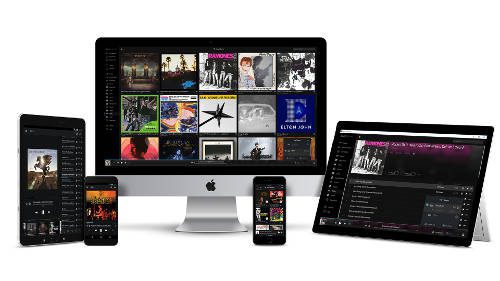“For the longest time there was this misconception that you could either have very refined, detail audio or you could be convenient. The reality is that the two things are not mutually exclusive,” says Joe de Jesus, product manager, custom installation for Lenbrook.
Indeed, Lenbrook wants integrators to have a conversation with their clients about hi-res audio (HRA), particularly as it relates to the company’s wireless BluOS platform and its ability to handle high-quality music files for multiroom audio.
“For years people gravitated to basic MP3 formats they could put on their phone, and they didn’t really expect a certain level of performance. As a result, performance took a back seat. And that created the stigma ‘in order for it to be good, it had to be cumbersome.’ Now it is relatively easy to demonstrate to a customer how good something can sound,” says de Jesus.
He admits that most custom installation companies don’t have the facilities to be able to show the differences between a fundamental MP3 file and hi-resolution audio file. That is why to sell HRA successfully requires the dealer to engage with the client on a conceptual level… and de Jesus as the ideal conversation starter: video.
SEE RELATED: Lenbrook's BluOS… the Making of a Wireless Platform
De Jesus recalls how integrators had to speak in conceptual terms for years when they explained the differences between 480, 720, 1080p and eventually 4K. While there are visual differences, they are subtle to most customers.
“Let’s face it… 4K is for the most part a very conceptual sale,” he notes.
‘FM Quality,’ ‘CD Quality’ Are Good Conceptual Terms
He says integrators need to use terms to which clients can relate, such as “FM quality” or “CD quality.”
These conceptual terms do not require an integrator to do an actual demonstration, but it gives the customer an idea that “this is probably as good as it will get. This is as close as it will be to the original recording with the level of refinement, resolution and resonant detail that exists in a master track,” says de Jesus.
“They have to explain to the customer that there is something better than what they have become accustomed to when they were introduced to the convenience of accessing music,” he says.
In addition to handling HRA, the BluOS platform also has an intuitive interface… another key element in multiroom audio. The interface element of an audio system is what enamors clients to use their distributed audio systems frequently. Otherwise, a system with uber-expensive loudspeakers will ultimately fall out of favor with integrators’ customers unless the interface is simple, intuitive and ubiquitous across multiple devices.
De Jesus also outlines some of the latest product offerings from Lenbrook with the BluOS platform, including the Bluesound Pulse Soundbar and PowerNode2, and the soon-to-be-released DALI Callisto loudspeaker. Lenbrook's other divisions, NAD and PSB, also use the BluOS wireless platform.







